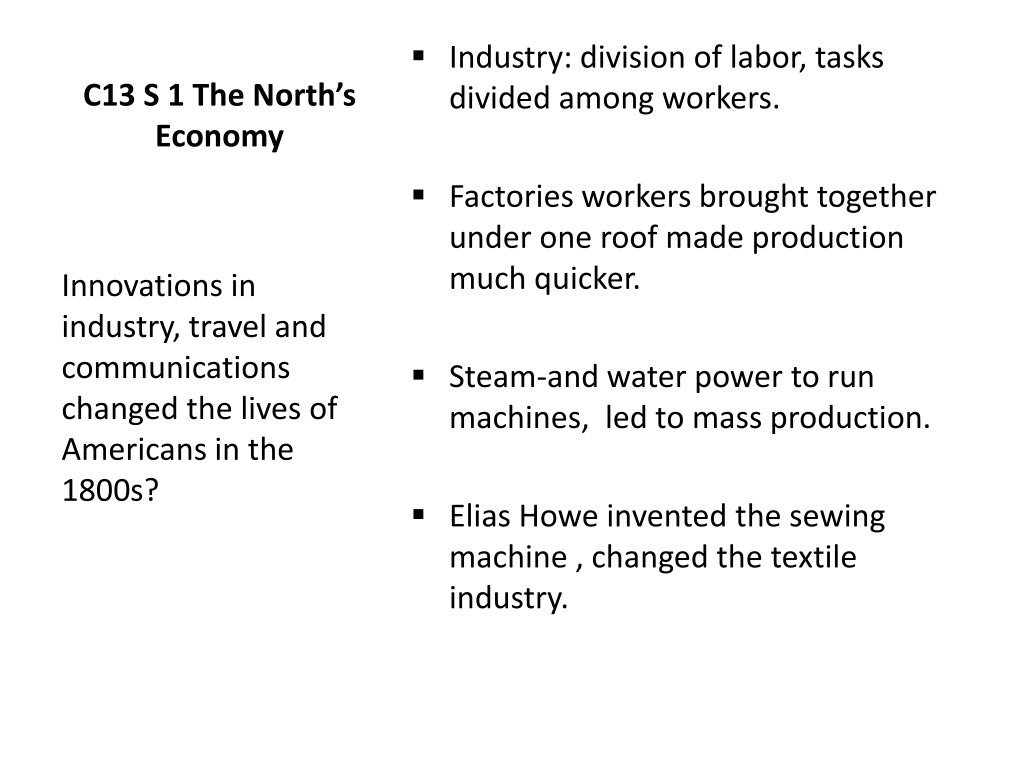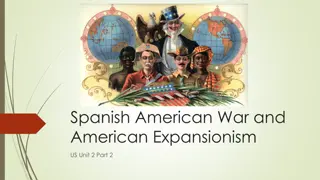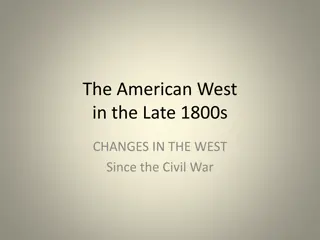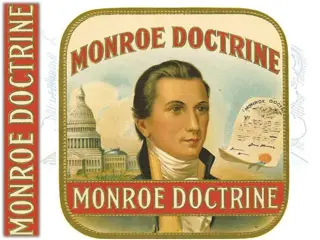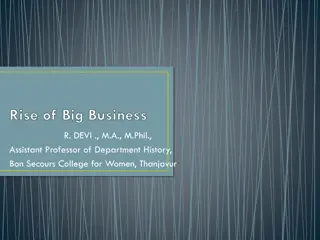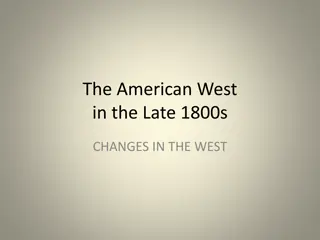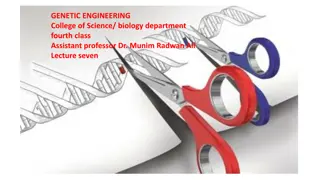Transformation of American Economy in the 1800s
American economy in the 1800s underwent significant transformation with advancements in industry, transportation, and communication. The North saw a rise in mass production in factories, improved transportation systems like steamboats and railroads, and faster communication through the telegraph. The invention of the cotton gin revolutionized Southern agriculture, increasing the demand for cotton and labor. Despite some efforts, the South lagged in industrial development, relying more on agriculture and lacking robust transportation infrastructure.
Download Presentation

Please find below an Image/Link to download the presentation.
The content on the website is provided AS IS for your information and personal use only. It may not be sold, licensed, or shared on other websites without obtaining consent from the author. Download presentation by click this link. If you encounter any issues during the download, it is possible that the publisher has removed the file from their server.
E N D
Presentation Transcript
Industry: division of labor, tasks divided among workers. C13 S 1 The North s Economy Factories workers brought together under one roof made production much quicker. Innovations in industry, travel and communications changed the lives of Americans in the 1800s? Steam-and water power to run machines, led to mass production. Elias Howe invented the sewing machine , changed the textile industry.
Improved transportation contributed to the success of new industries Thousands of miles of roads and canals were built. Robert Fulton changed river travel by developing a steam boat. Clipper Ships such as the Flying Cloud took American goods around the world. Steam Powered locomotives such as the Rocket opened rail travel of people and goods. Transportation
With improved industry and transportation there was a need for faster communication. The telegraph filled the need Samuel Morse developed a code of dots and dashes to send messages quickly over long distances. John Deere developed a steel tipped plow to better cut tough prairie sod. Cyrus McCormic invented a reaper that made wheat production more profitable. Communication and Agriculture
Eli Whitneys Cotton Gin changed Southern Agriculture, during colonial times tobacco dominated agriculture. The cotton gin allowed Southern planters to produce and clean more cotton faster. Increased industry in the North as well as European Mills raised the demand for Southern cotton. Increased demands for cotton brought about an increased need for labor, slaves and land. C13 S3 Southern Cotton Kingdom The South s Economy, by 1790 most Southerners lived in the Upper South along the Atlantic Coast.
Souths economy was very different than that of the North. Depended upon agriculture . There was a lack of investment capital in the South Industry in the South Some Southerners did want to introduce industry. William Gregg and Joseph Anderson were two examples.
South depended upon natural waterways for transportation. Southern Transportation Few canals, and roads were poor. South had few railroads and those they did have were short local and not interlinked.
